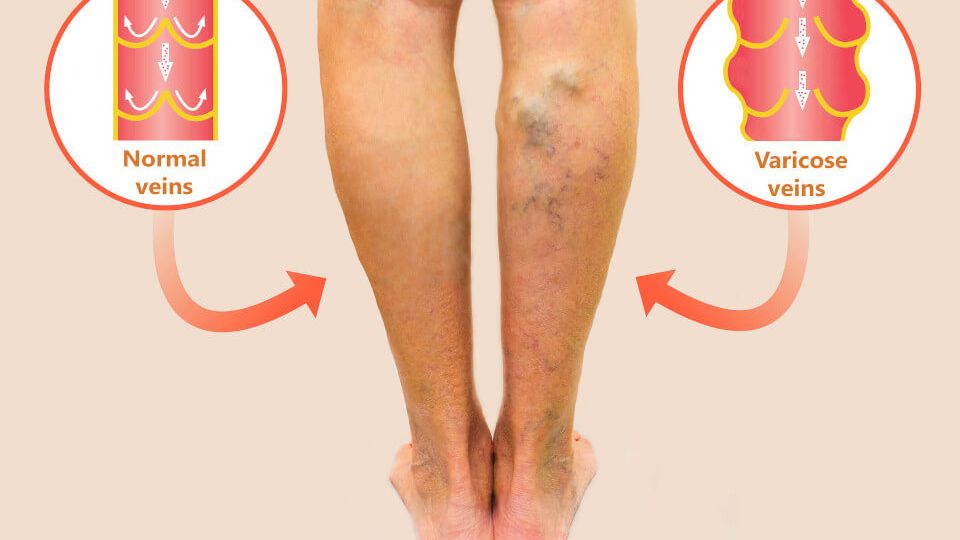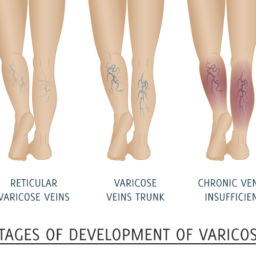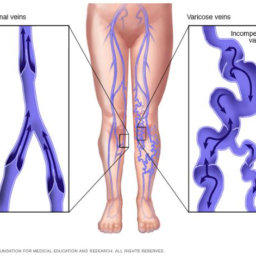
Varicose veins, typically found in the lower legs, are enlarged veins that affect 20-30% of adults, with a higher prevalence among older individuals. While often a cosmetic concern, they can also cause discomfort and complications such as leg swelling, bleeding, blood clots, severe skin changes, and chronic wounds if untreated. Discover effective varicose vein treatments available for patients.
At Certified Foot and Ankle Specialists, we prioritize efficient treatment for this condition, especially for our active South Florida patients who frequently wear shorts year-round. If you’ve noticed varicose veins in your lower extremities, don’t delay scheduling an appointment with the best podiatrists near you. Our vein specialists can effectively treat the condition, resulting in the reduction or complete elimination of unsightly veins, helping you get back to all the outdoor activities you love.
Why do Varicose Veins Occur?
Before we get into treatment options, it is important to understand why varicose veins develop in the first place. The veins in your legs’ main function is to bring blood in a one-way direction from the feet to the heart. This is conditioned upon a very well-coordinated action of muscle contractions and vein valve function. During ambulation, muscle contractions propel the blood to flow against gravity; meanwhile, tissue valves inside your veins open and close in a sequential manner to avoid the blood from flowing in the opposite direction. At rest, these valves remain closed. Any condition disrupting this coordinated effort of muscle contraction and valve closure can trigger backward blood flow or reflux. Reflux within the superficial veins is the main reason why people develop varicose veins. Family history, advanced age, female sex, obesity, and occupation are the most common conditions associated with venous reflux and varicose veins. Vein walls and valves of patients with the above conditions weaken over time causing vein enlargement and reflux. Varicose veins are enlarged, twisted, and raised veins below the skin surface.
Treating Your Varicose Veins Conservatively
After diagnosing your varicose veins, your vein specialist or podiatrist will recommend conservative options first. This includes compression wraps or stockings, and tips to improve your circulation overall, like exercise, leg elevation, and avoiding long periods of standing or sitting. If your varicose veins are not improving, the next step may be to perform a procedure to correct the venous reflux.
Most varicose veins connect directly or through branches (tributaries) to a straighter, longer, larger, and deeper vein called saphenous vein, in a way very similar to how numerous smaller channels feed the waters of the main river. Treating varicose veins without correcting the reflux within the saphenous vein and its tributaries is similar to trimming only the tip of tree branches with the intention of taking down the whole tree. All the refluxing veins, including the saphenous, tributaries, and varicose veins must be treated at once or during separate treatment sessions. The largest veins should be treated first. For the treatment of the main trunk (saphenous vein) endovenous thermal ablation is recommended. This procedure uses laser or radiofrequency to deliver heat via a catheter to the vein lumen for the purpose of closing off the refluxing vein.
For the treatment of the tributaries and varicose veins, sclerotherapy injections are often recommended. These injections, which are performed with or without ultrasound guidance, involve injecting a solution that will cause irritation to the lining of your blood vessel, resulting in the vein collapsing and turning into scar tissue over time. Stab avulsion phlebectomies are performed usually in combination with endovenous thermal ablation and/or sclerotherapy for the treatment of the most prominent varicose veins. In this procedure, the vein specialist removes the varicose veins through multiple very small skin incisions. No stitches are needed. All our procedures are performed in the office setting using just local anesthesia. Both medical and cosmetic outcomes are excellent.
Your vein specialist can help determine which route of treatment would be best for your case. Don’t suffer through the pain, embarrassment and possible long-term problems attributed to your varicose veins any longer.
Varicose Vein Surgery
In severe cases, or cases that are not responding to conservative treatments, surgery may be required. However, with the introduction of endovenous ablation, surgery for varicose veins is rarely needed. Some common types of varicose vein surgery include vein stripping or SEPS (Subfascial Endoscopic Perferator Surgery). Your vein specialist can help determine which route of treatment would be best for your individual case.
Varicose Vein Treatment at Certified Foot & Ankle Specialists
Our staff includes an experienced vein doctor also known as a phlebologist to ensure we provide the proper diagnosis and suggest options such as noninvasive vein treatment. Don’t suffer through the pain, embarrassment, and possible long-term problems attributed to your varicose veins any longer. We specialize in the treatment of damaged veins and employ the latest procedures to get you back to enjoying the active lifestyle of South Florida without worry. When searching online for ‘varicose vein treatment near you‘ consider our locations in Broward, Palm Beach, and Martin Counties to serve you better. Make your appointment today! 1-855-550-FEET





